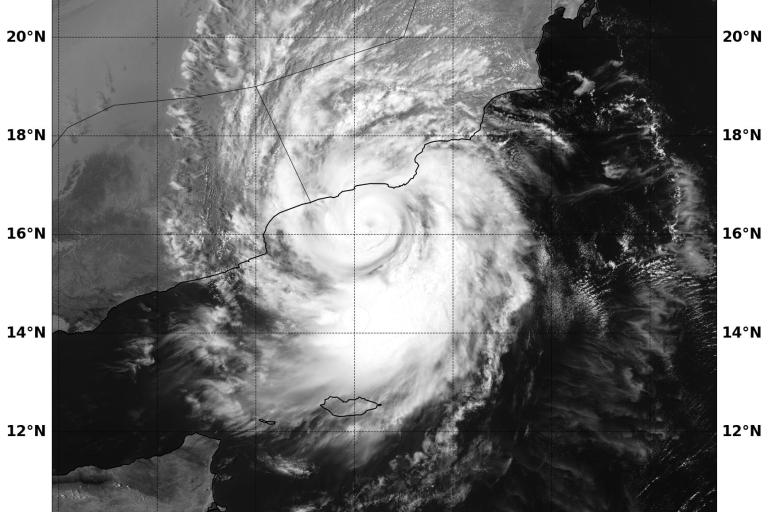Extremely severe cyclonic storm Mekunu impacts Oman and Yemen
Mekunu developed in the Arabian Sea and impacted Oman and Yemen as an extremely severe cyclonic storm. It followed less than a week after cyclone Sagar, which caused flash floods and casualties in Yemen, Somalia and Djibouti. Regular warnings from meteorological services and mobilization by disaster management authorities helped keep loss of life and property to a minimum.Mekunu has intensified into an extremely severe cyclonic storm in the Arabian Sea as it approaches the coast of Oman and Yemen. It follows less than a week after cyclone Sagar, which caused flash floods and casualties in Yemen, Somalia and Djibouti. Meteorological services are issuing regular warnings in an effort to keep loss of life and property to a minimum.

Mekunu developed in the Arabian Sea and impacted Oman and Yemen as an extremely severe cyclonic storm. It followed less than a week after cyclone Sagar, which caused flash floods and casualties in Yemen, Somalia and Djibouti. Regular warnings from meteorological services and mobilization by disaster management authorities helped keep loss of life and property to a minimum.
WMO’s Regional Specialized Meteorological Centre (RSMC) New Delhi, operated by the India Meteorological Department, accurately forecast that Mekunu would make landfall on the evening of 25/26 May near the Oman port city of Salalah. It was the equivalent of a category 3 hurricane on the Saffir Simpson scale, with maximum sustained wind speed of 170 to 180 km/h, gusting to 200 km/h.
Storm surge and huge waves inundated low lying areas near the coast. Oman’s Directorate-General of Meteorology said that 328 mm of rainfall was recorded in Salalah in a 36 hour period from 24 May (000UTC) to 25 May (12UTC). This compares with annual average precipitation in the city of 130 mm.
Dhalqut ( elevation 784 m), received 540 mm rin the 36 hour period.
Scenes from Salalah showed widespread devastation, with damage to roads and infrastructure. On the basis of warnings from Oman’s meteorological department and its National Multi-Hazard Early Warning Centre, exposed areas were evacuated, medical facilities were readied and the port and airport was closed ahead of Mekunu’s landfall.
Initial reports said that four people died in Oman.
Meteorological services in neighbouring countries, including Yemen, United Arab Emirates and Saudi Arabia, also issued regular alerts and warnings for high winds and heavy rainfall.
En route to Oman, Mekunu hit the Yemeni island of Socotra, where at least 17 people were reported missing feared dead as a result of high winds and heavy thundershowers leading to flooding. An aid operation for Socotra, which is a UNESCO heritage site famed for its biodiversity, was launched. Socotra was also hit by cyclonic storm Megh in November 2015.
Cyclones striking the Arabian Peninsula are rare but not exceptional.
Above average Southwest Arabian sea surface temperatures of 29-31° Celsius are conducive to the development and intensification of tropical cyclones.
In June 2007, Super Cyclonic Storm Gonu killed 50 people and caused about US$4.2 billion in damage in Oman. It dropped as much as 610 mm of rain near the eastern coastline, causing flooding and heavy damage. In June 2010 Very Severe Cyclonic Storm Phet moved across eastern Oman, causing floods, wrecking homes and causing casualties.
Yemen was hit by extremely severe cyclonic storm Chapala (the equivalent of a category 4) in November 2015. Thanks to evacuations ahead of the storm, the casualty toll was reported at just 8, but economic and structural damages were severe. Extremely severe cyclonic storm Megh hit the Yemeni island of Socotra just days after Chapala.
Yemen is especially vulnerable to the impacts of Mekunu, which comes hard on the heels of Sagar. Djibouti and northern Somalia bore the brunt of the impacts of Sagar, which destroyed homes and washed away property and livestock and reportedly claimed about 20 lives.
RSMC New Delhi website is here

